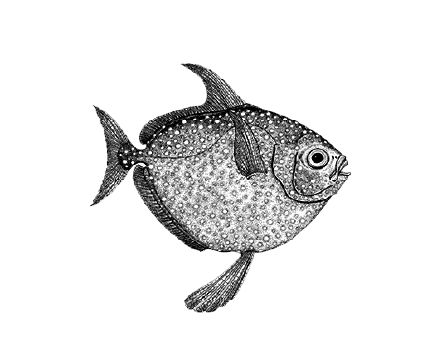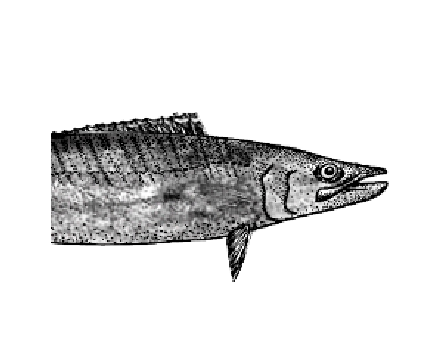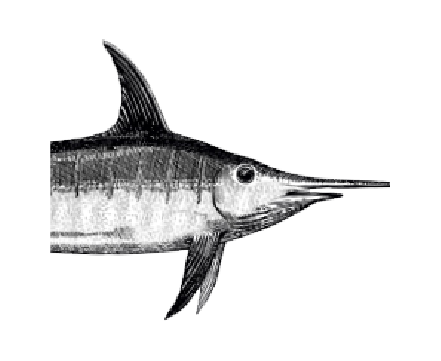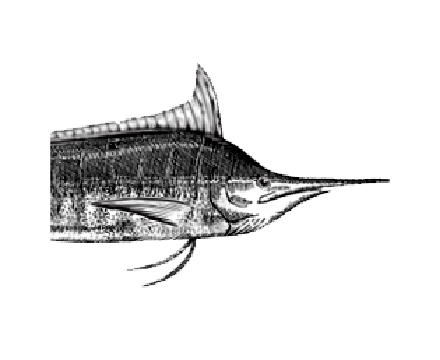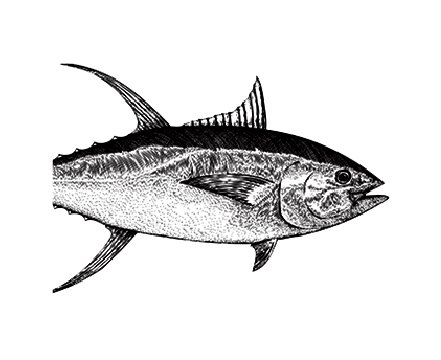tips
Freezing fish
If you are not planning to eat your fish in the following few days after purchase, then a good option is to freeze it. While frozen fish loses some of its quality characteristics, this compromise can be mitigated by following a few steps:
To start with make sure fish fillets are dry before the freezing process by patting with a clean cloth or absorbent paper.
Place them in an airtight freezer bag with a ziplock, be sure there are no air pockets (vac-pack bags are perfect for this).
The time it takes to freeze is a key principle which will determine the quality of the resulting product. The faster fish freezes, the better quality it will be, and this is because a quick-freezing process causes very small ice crystals to form inside the fish which leaves the integrity of the flesh intact. If a slower freezing process occurs then the formation of the ice crystals takes longer, resulting in larger scale diffusion and formation of bigger crystals which rupture the delicate cellular structure and lead to compromised texture and flavour (and this is why fish processing factories use blast freezers!)
Generally speaking, households are only equipped with conventional freezers, so the key is to make the surface area of the fish as large as possible. Aim for single layers of fillets spread out over the maximum area possible (as opposed to a solid block of fillets that will take hours to freeze the core). This thin single layered sheet of fillets will freeze quickly and also defrost faster once you are ready to cook it.
To defrost, take it from the freezer and leave in the refrigerator overnight before cooking and eating.
Filleting Fish
To accompany the video below which shows the filleting process in our factory, here’s some tips for doing this in your own home:
Choose a large bench space and make sure all surfaces are clean – best to use a good-sized chopping board that is larger than the fish you intend to fillet.
Set up some empty containers for the different components of the fish – one for fillets, another for heads/collars/bones, and finally a third for guts and skin/scales.
As well as the obvious uses for the fillets, the heads/collars/bones can be roasted as there’s plenty of meat remaining to be picked off, or they may be boiled as a soup or to make a delicious stock, or even smoked. The guts and skin make excellent compost so burying them in the garden will help veges grow and the fruit trees flourish.
Make sure knives are sharpened beforehand – it’s hard to produce beautiful results with a blunt knife.
Where possible, try to make the process dry. Dry-filleting is simple, it’s a matter of not engaging water and using a cloth or paper towel to wipe any liquid or scales off. The reason for using this method is twofold:
Firstly and simply put, water dilutes flavour. The higher the water content of the food you are cooking or preparing, the more bland the taste will be. Allowing water to come in contact with fillets washes away the natural oils and constituents which give the fish its great flavour.
Secondly, wet fish fillets have a much shorter shelf-life. Bacteria thrives in the water/juice that surrounds them and they will start to degrade much faster than dry fillets.
Multiple top chefs endorse dry-filleting fish in this way to optimise the flavour and longevity of their fish.
Make sure when finished you wash all surfaces and knives, chopping boards well so they are clean and ready to use for next time.
See storage Astuces for more tips on keeping your fish.
< < < FILLETING VIDEO EMBED HERE > > >

Fish Storage
Transporting fish from Comptoir de l’Ocean to your home: always use a cooler or insulated bin, and plenty of ice. This is very important and will not only maintain the food-safety standard of the product but also ensure you maximise its shelf-life. Keeping fish at room-temperature or in the car un-chilled for even half an hour will compromise quality.
Once refrigerated, shelf-life varies between species. Lean fish like albacore can be stored for longer periods while oilier species like marlin will tend to degrade faster. Crustaceans and shellfish have an even shorter shelf-life so should be eaten on the same day as they are purchased.
When storing fish in the fridge it is best to keep it in an airtight and dry container. The ideal is a shallow pan with the fillets spaced out on the bottom with plastic wrap over the top. The fillets should be dry before storage (pat dry with a paper-towel or cloth if not). It is important the fillets do not sit in their own juices so best practice is to check the fish each day and pour off any excess liquid. The reason for aiming to eliminate water is that bacteria thrive in the liquid/juice of the fish and wet fish will start to degrade and smell much sooner than dry. For the absolute best result each fillet can be wrapped in Japanese specialty absorbent fish paper. This wicks any moisture immediately off the fish and greatly increases shelf-life (buy here)
The coldest part of a fridge is at the bottom in the back so place the pan of fish there. Ideally fish is kept at 0-1 degrees C but conventional fridges run at ~3 degrees so if you want to get the longest shelf-life then gently place a sealed bag of flake ice over the top of the pan. This will keep the fish well chilled and slow down the rate of degradation.
Also note: if you have the chance of storing the fish whole it will last much longer ‘on the bone’ than it will as fillets. So, the best method for maximising shelf-life is to remove the gills and guts and then leave the whole fish covered in the fridge until the day you plan to eat it. Fillet it on that day and enjoy 🐟
